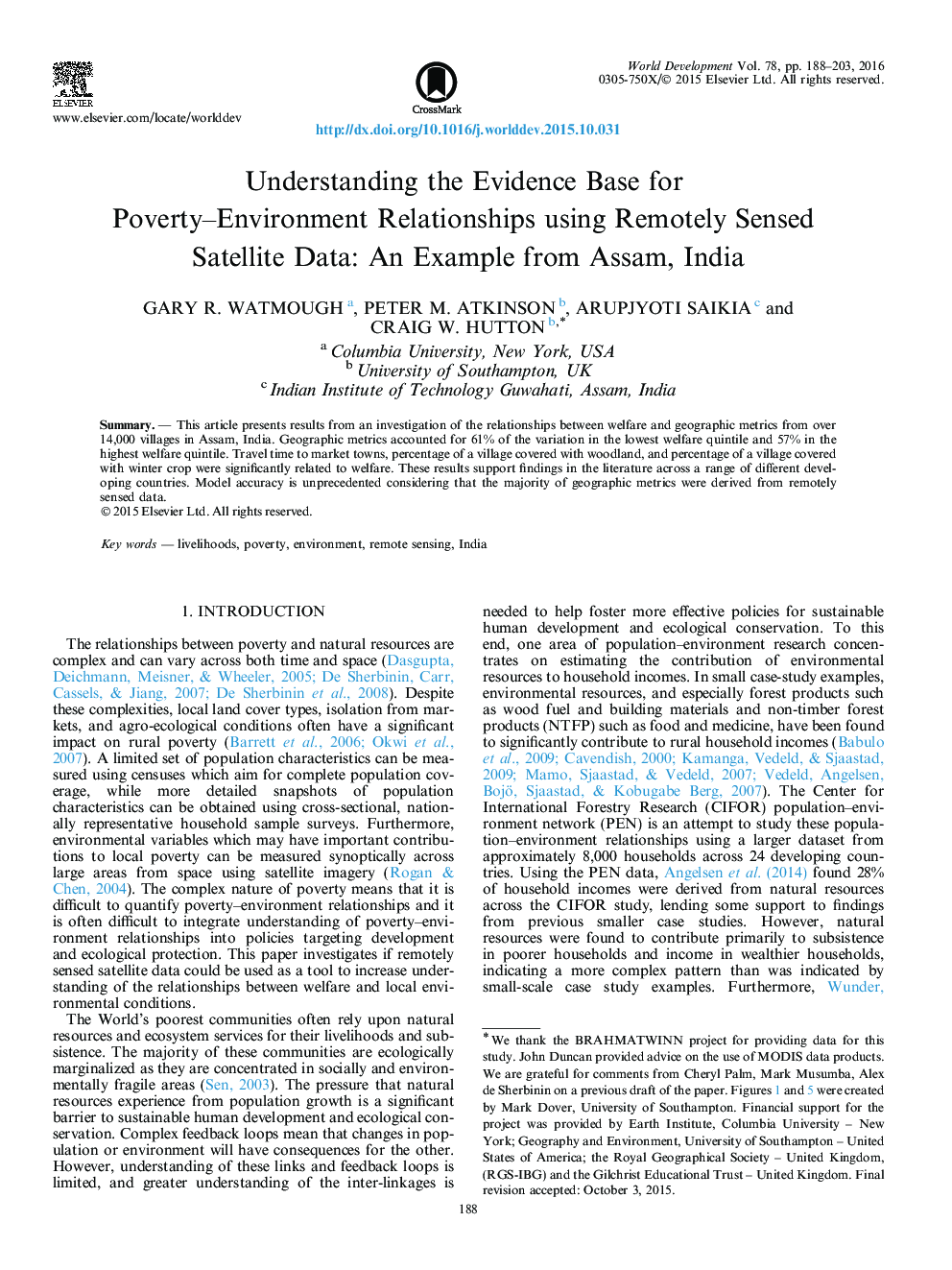| Article ID | Journal | Published Year | Pages | File Type |
|---|---|---|---|---|
| 7393109 | World Development | 2016 | 16 Pages |
Abstract
This article presents results from an investigation of the relationships between welfare and geographic metrics from over 14,000 villages in Assam, India. Geographic metrics accounted for 61% of the variation in the lowest welfare quintile and 57% in the highest welfare quintile. Travel time to market towns, percentage of a village covered with woodland, and percentage of a village covered with winter crop were significantly related to welfare. These results support findings in the literature across a range of different developing countries. Model accuracy is unprecedented considering that the majority of geographic metrics were derived from remotely sensed data.
Related Topics
Social Sciences and Humanities
Economics, Econometrics and Finance
Economics and Econometrics
Authors
Gary R. Watmough, Peter M. Atkinson, Arupjyoti Saikia, Craig W. Hutton,
